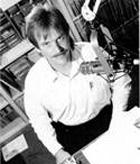September 11, 2014
Board Blog: Special Pre-Convention Sessions and the Second LPFM Window
Last Updated on September 11, 2014 by askcbiorg

[fusion_builder_container hundred_percent=”yes” overflow=”visible”][fusion_builder_row][fusion_builder_column type=”1_1″ background_position=”left top” background_color=”” border_size=”” border_color=”” border_style=”solid” spacing=”yes” background_image=”” background_repeat=”no-repeat” padding=”” margin_top=”0px” margin_bottom=”0px” class=”” id=”” animation_type=”” animation_speed=”0.3″ animation_direction=”left” hide_on_mobile=”no” center_content=”no” min_height=”none”]

Will Robedee, CBI Executive Director
Right about now is the best time to book your airfare for the convention. Just yesterday I had someone tell me airfares from his city to Seattle dropped more than $100. If you have not booked your flight yet, give some serious consideration to booking a Tuesday arrival (or early Wednesday) so you can register for the special pre-convention sessions offered this year.
If either topic is of interest to you, the extra time away will be well spent because you simply cannot pay $50 to attend sessions like these anywhere.
FCC 101 – Spend three hours with an experienced adviser and a well-known lawyer who represents non-commercial and commercial stations before the FCC on a regular basis. This special session will cover all of the basics of keeping your station legal.
Adobe Creative Quickstart – Prices for a day’s training generally start at about $500. For $50, you can experience a very small classroom-size experience for a three hour training session. With the small classroom setting, you will get personalized attention from a certified instructor who is one of the most popular speakers at the convention.
For more information about these special sessions, visit http://askcbi.org/seattle/sessions-and-speakers/pre-conference-workshops-wed-oct-22/. If you plan to enroll, but have not made your hotel reservations yet, please contact us at https://www.askcbi.org/?page_id=1903.
LPFM Round II
The FCC opened the most recent window for LPFM applications in 2013, with a deadline to file in November of 2013. They received over 2800 applications from across the nation and, as you can imagine, there were a lot of applications where two or more were in conflict with each other. These are referred to as mutually exclusive applications (MX). The initial list of MX applicants included 406 groups.
Stations which were not MX were called singletons and were generally granted a construction permit, unless there was an objection filed with the FCC.
In order to resolve the large number of MX applications, the FCC provided a limited window for minor changes to applications in order solve their conflicts through various types of amendments (including proposed time shares) in mid-December.
Due to the large number of issues which arose concerning various applications, it was not until July 9, 2014 that the FCC took the first, in what appears to be three actions to help to resolve the remaining MX groups. At this time, the announced “tentative selectees” for LPFM frequencies were in AK, AZ, CA, CO, HI, KS (including Kansas City, MO), NE, NV, OR, UT and WA. Tentative selectees were chosen based on a point system. Applicants garnered points for various issues, such as established community presence, promising to have a local studio, promising to originate eight hours of local programming daily, etc.
Those with the most points were identified as a tentative selectee; however, a large percentage of the groups were tied with multiple applicants having the same number of points. The FCC rules anticipated this situation. Applicants who were still MX at this point could make major changes to their applications and or take other legal actions to help them prevail.
A fair percentage of the MX groups in this round have been settled, but many still remain unresolved. If you are in this situation, you need to find a resolution quickly as the deadline to come to a resolution is 10/7/2014. If you do not come to a resolution before then, you will likely be submitted to a forced time share which is non-renewable.
Round II
The FCC “released” Round II on Friday, Sept. 5, 2014 stating that it would start accepting major amendments on Monday, Sept. 8, 2014, but it appears that is not what transpired. The monitoring we have in place for FCC applications did not show any amended applications on this first day, which is a surprise because the first day to file major amendments is normally flooded with applicants filing since, if applicant X files for a major amendment on the first day, and applicant Y files a conflicting amendment on day 2, applicant X prevails. It appears the reason this occurred is that the FCC did not make the announcement public until Monday September 8, 2014, although they were required to provide a day between the public notice and the opening of the window. Tuesday the 8th did indeed show a large number of proposed amendments.
So, what are the initial results of Round II, which included applicants in CT, DC, DE, IL, IN, KY, MA, MD, ME, MI, MN, MO, NC, NH, NJ, NY, OH, PA, RI, SC, TN, VA, VT, WI and WV?
A quick survey of the tentative selectees shows the following stations, which might be considered student operations, as singletons:
Benedictine University, Livingstone College, Westside High School and New Buffalo Area Schools.
Good news!? Yes, and maybe no. This means that there is no one else who has filed an application which conflicts with theirs. On the other hand, any party has 30 days to file either a petition to deny, or an informal objection to the application, which could result in delays or worse. Once the 30 day window closes, these stations should be on solid ground to begin construction of their new station.
A non-comprehensive review of MX groups in Round II shows the following stations, which might be consider student operations that are tied with one or more tentative selectees:
One of two tentative selectees:
Manchester Community College Sanford School
Greater Clark County Schools Kentucky State University
Massasoit Community College Regional School Unit Rsu 21
Roosevelt High School Manlius Pebble Hill School, Inc.
North Penn School District
One of three tentative selectees:
Morton College Lasell College Radio
St. Louis Language Immersion School Northern Nash High School
Visible Music College
One of Five selectees:
Johns Hopkins University
One of six selectees:
Philadelphia Student Union Brown Student Radio
One of seven selectees:
Chelsea Public Schools is one of seven tentative selectees and is in the same group as Boston Public Schools.
The following were not top point getters:
Loyola University Maryland Marshall University Graduate College
Atlantic Cape Community College Kutztown University Rectors & Visitors of The University of VA Whitefish Bay School District Board
What are the options for those who are not singletons or those who were not top point getters?
Those who were not top point getters are not necessarily out of options. They can still file a major amendment to move their proposed transmitter location, use another frequency (if one is still available with no current applications), or find fault with another MX application and hope to reduce their points or have their application dismissed. One point to look for is to see if the other applicant(s) have actually secured their transmitter site. Any major amendment application should be submitted ASAP, because the FCC will accept such applications on a first come-first served basis, regardless of the number of points.
Tied with others? You have the options listed above, plus you have more. You could propose a time share with another top point getter in your MX group to aggregate more points than others. If your date of established community presence is the oldest or at least among the top three in your group of top point stations, you may have some advantage if there are alternate frequencies available. Why?
When an MX group has more than three tied applicants with the same number of points, the three applicants with the longest established community presence per your initial application will be considered for a non-voluntary time share with a non-renewable license, which is a very bad situation for all involved. This will force all stations to look at all alternatives, unless they want to time share, which may not be that bad in all situations. A voluntary time share is renewable. A forced time share is not.
I will not visit all of the possible scenarios and highly suggest that if you want the LPFM frequency you applied for and are in an MX, you retain a highly qualified engineer and lawyer to work through your particular situation and offer you the best strategy going forward. I believe I know a lot about this subject as an employee at a school with an LPFM application, but even so, I have hired both an engineer and a lawyer to make sure I do it right and that, if my employer/students do not end up with an LPFM frequency, it will not be because I did it without expert consultation.
For more information, see the FCC release at http://www.fcc.gov/document/fcc-names-tentative-selectees-mutually-exclusive-lpfm-applications-0 or contact me for informal thoughts about your situation.
[/fusion_builder_column][/fusion_builder_row][/fusion_builder_container]





